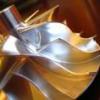
Coolant System Bubbling & Self-pressurization (Chemical Reaction? Electrolysis?)
#1

 Posted 11-08-2012 04:44 PM
Posted 11-08-2012 04:44 PM

I'm wondering if any of you have seen or heard of this happening before...
Some background:
My 91 miata track car just received a timing belt & water pump change one track weekend ago (End of Oct). I installed all new radiator hoses at the same time, and replaced the coolant (with distilled water + "NapaKool" water wetter, which was what was in it previously). I did not flush the system with fresh water before refilling, since the system looked really clean to start (and didn't have easy access to a hose).
The car has an aluminum mishimoto radiator.
I just performed a cylinder leakdown test a little over a week ago and found it to be in relatively good shape, with ~2% leakdown across the board. It eats some oil at high engine vacuum and smokes a bit during off-throttle, high-RPM occurances, but it makes great power and runs strong. It's a pretty old engine that's lived a really hard life since its last rebuild (140k miles ago? with a LOT of track time since its last rebuild), so I expect that and am just running it until it dies.
The problem:
I've noticed a bubbling sound coming from the car when i walk into the garage. Its really quiet, but i noticed it at night when nothing else was on. Odd thing is that the car has been sitting in the garage for a week without moving or starting it.
After a few minutes of putting my ear to everything in the engine bay, I figured out that the noise was bubbling in the overflow tank. (WTF?) I lifted the relief valve on the cap and a ton of air came bubbling out of the radiator. I thought maybe it was air that was stuck somewhere in the system after the coolant replacement and bleed. I closed the cap again and left.
The next day, I heard the damn noise again. Opening the valve let out the same amount of air into the overflow tank. I opened the cap and could hear some bubbling from the coolant, and see it happening. Looks a little like the carbonation being released when you open a soda bottle.
I'd close the cap and leave it for an hour or so, and it would off-gas enough air to cause some bubbles in the overflow tank when i opened the cap again.
What could it be?
Only a few things come to mind or make sense after my hour of web searching forums.
Either:
A) Its a chemical reaction in the system, between the NAPA Kool and old water-wetter (maybe the previous owner used a different brand of water wetter?), or between the NAPA Kool and some sediment/coating in the radiator, or maybe some coating on the inside of the new hoses (they were OE Mazda hoses)?
or
b )It's being caused by electrolysis.
- I'm not convinced by this because I didn't really change anything electrical, the car's ignition has been off, and the car hasn't run in a long time. Plus, I had cleaned all the grounds when i first got the car. And it's a stripped out base-model NA with about as few electronics as you can get on these cars, but that doesn't mean it can't have electrical issues.
- I'll be checking for this anyways when I get home today.
Has anyone ever seen this before? Anything I've overlooked?
Currently, my plan is:
1) Check for electrolysis and try to rule this out.
2) Otherwise, flush the system and change the coolant again. Maybe use some regular anti-freeze this time?
I want to figure this out before this weekend's track event at CMP!
Thanks,
-Mike
#2

 Posted 11-08-2012 08:04 PM
Posted 11-08-2012 08:04 PM

its more slippery than oil.
cant help on the issue, but will read along to find out.
1999 SM #92 SoPac division
#3

 Posted 11-08-2012 08:53 PM
Posted 11-08-2012 08:53 PM

My first guess is you're getting air into the system somewhere. Check all your hose connections and wiggle all the hoses while running hot. Sometimes they don't leak just sitting there but you find a leaker when you twist and bend the hoses while running. You could also have a head gasket leak. You can get a block check kit from Napa for about $20 that you can stick in your radiator inlet and see if you have exhaust gasses pushing into your cooling system. Takes about a minute with the engine hot.



#4

 Posted 11-08-2012 09:10 PM
Posted 11-08-2012 09:10 PM

Josh,
I never really wanted to use antifreeze. That's why I went with water+NapaKool in the first place. I've read and heard enough stories that I don't want to be the guy who drops it on the track (I've been lucky enough to not have experienced coolant on track first hand yet). I just wanted to ask the question to see if there was any benefit for considering antifreeze again.
Keith,
I agree with your comments about most coolant system components/fluids are designed to avoid corrosion.
I ran the car for a weekend after replacing all the hoses and doing the TB+WP change and everything was fine. I'll check the hoses again to see if i missed anything when i replaced all the hoses.
If I were getting air into the system though, do you really think it would still be separating out (seen as the bubbling) after a week of sitting? I wouldn't think that coolant would be able to entrain that much air, and even if it did, I would think that it'd be gone by a week's time?
The fact that the recent leakdown test came out at such a low leak percentage persuaded me to eliminate a leaky head gasket as a possible cause. Can't hurt to check with the block check kit though.
#5

 Posted 11-08-2012 11:21 PM
Posted 11-08-2012 11:21 PM

Here's two pictures. One from when i just took the cap off, the other, 30mins later (cap off the whole time).
Attached Files
#6

 Posted 11-09-2012 06:47 AM
Posted 11-09-2012 06:47 AM




#7

 Posted 11-09-2012 12:43 PM
Posted 11-09-2012 12:43 PM

Rick
P.S. 2% leak down on an unrebuilt 140K motor sounds almost too good to be true.
2009, 2010 & 2011 SCCA Great Lakes Div. Reg. SM Champ
2006, 2009, 2010 & 2011 Cincy SCCA Reg. Driver of the year
Powered by: Stewart Engines
Set up by: RAFT Motorsports
SM: The safest race car in the world. It can just
barely kill you.





#8

 Posted 11-09-2012 02:25 PM
Posted 11-09-2012 02:25 PM

Phew...... that was a close one!
Tony Senese
NASA-NE SM Director
'06, '08, '11, '12, '13, '14
NASA-NE SM champ

#9

 Posted 11-09-2012 02:46 PM
Posted 11-09-2012 02:46 PM

- Keith Andrews likes this
Skip Brock
OPM Autosports, Nelson Engines
2012 SARRC Spec Miata Champion
2012 SEDiv Regional Driver of the Year




#10

 Posted 11-09-2012 04:46 PM
Posted 11-09-2012 04:46 PM




#11

 Posted 11-09-2012 08:14 PM
Posted 11-09-2012 08:14 PM

Sure sounds like galvanic corrosion.
Galvanic corrosion happens too slowly to bubble like that. Even if you run a charge through it, it's a process that takes quite a while to eat the metal. If it was corrosion bubbling like that it would eat the metal so fast the coolant would be on the floor by now.
I have had hoses that seemed fine and I could run the car with no signs of leaks but I actually had one cut and on track the vibration let the crack open up and water would squirt out. That being said, since the system is under pressure the failure mode is water leaking out, not air leaking in.
They do look like soap bubbles. I can see the rainbow colors on one.



#12

 Posted 11-09-2012 08:15 PM
Posted 11-09-2012 08:15 PM

Seriously I don't know what it is but I'd flush the system maybe with a diluted anti-freeze solution ..
then put straight tap water in it.

#13

 Posted 11-09-2012 10:21 PM
Posted 11-09-2012 10:21 PM

#14

 Posted 11-10-2012 12:31 AM
Posted 11-10-2012 12:31 AM

Kyle
PS- Just walked out to check it... still doing it.
#15

 Posted 11-10-2012 05:25 AM
Posted 11-10-2012 05:25 AM

#16

 Posted 11-10-2012 10:10 AM
Posted 11-10-2012 10:10 AM

Is this really a big deal?
--because someone commented that we should all post our names, and not be anonymous. I agree.


#17

 Posted 11-10-2012 10:22 AM
Posted 11-10-2012 10:22 AM

Is this really a big deal?
In your professional business, if you looked into one of your patients _ _ _ _ _ and viewed foam, would the foam be normal?
- Keith Novak likes this



#18

 Posted 11-10-2012 10:34 AM
Posted 11-10-2012 10:34 AM

Then agitate that container, shake it, etc, (i.e. see if the foaming could indeed be soap or similar). Report back.
If those two experiments "pass", then it is more likely that combustion pressure or some other source of "air" is entering the system.
For faster reply than PM: miataboxes>>>AT<<<gmail>>DOT<<<com
#19

 Posted 11-10-2012 10:55 AM
Posted 11-10-2012 10:55 AM

Thanks for your replies and suggestions.
Josh,
I never really wanted to use antifreeze. That's why I went with water+NapaKool in the first place. I've read and heard enough stories that I don't want to be the guy who drops it on the track (I've been lucky enough to not have experienced coolant on track first hand yet). I just wanted to ask the question to see if there was any benefit for considering antifreeze again.
Keith,
I agree with your comments about most coolant system components/fluids are designed to avoid corrosion.
At risk of being flamed to death by the safeniks, I always used about 15% antifreeze in my car, after having a host of obvious contamination (e.g. red "rust") crop up in the cooling system after only a few weeks of running pure distilled water and Redline Water Wetter. During the off-season, I would drain the system and put a lot more antifreeze in.
It always perplexed me that admitting to running coolant would have you burned at the stake, but guys constantly causing ACTUAL accidents from boneheaded and downright dangerous driving always got a free pass under the heading of "That's racin'!".
And don't get me started on the Spridgets and the like routinely relieving a few quarts of Redline down the track, usually in a series of corners - at least once per weekend, whereas I never vented any coolant or oil from an SM in 8 years and 70+ weekends?
(Sidebar: If your car's engine requires an Accu-Sump, it is a defective design. I'm lookin' at you, Porsche 944, etc.).
If you suspect galvanic corrosion, test the potential (voltage) between your coolant and ground.
If you suspect some acidic chemical reaction, test the pH with litmus, drain a sample and play with it (add some acid, some base, some surfactant, etc.)
The marine and diesel guys are the leading geeks on coolant chemistry - also, take a look at BobIsTheOilGuy.Com. There are some real smart guys over there, although they have mostly been sent into hiding by an onslaught of lazy newbs asking what the best oil is for their Blah Blah R-Type M Edition GT Turbo Sport V Spec Brougham Limited Blah Blah.
- JBlaisdell likes this
For faster reply than PM: miataboxes>>>AT<<<gmail>>DOT<<<com
#20

 Posted 11-11-2012 11:13 AM
Posted 11-11-2012 11:13 AM

I'll put my chemist hat on for a minute. My guess is that he had some salty residue in the motor and the water/water wetter solution is mildly acidic. The bubbles are CO2 resulting from the salts being slowly dissolved by the solution. A flush of the system should alleviate the issue.
Just a guess, of course.
Dayle Frame
_________________
One of the "water wetter" products lists its pH value at 8.6, which means that it is "basic" or alkaline.
Radiator cleaners typically have an alkaline solution. Deposits in an engine cooling system might be Calcium Carbonate, which probably comes from typical community water sources. An obvious by-product of the two is Carbon Dioxide, a colorless, odorless gas.
I used some water wetter this summer, with an old engine that had not been used for many years, in a street driven car. An off-white to light brown coolant mixture developed after a few weeks, which probably indicates that deposits were being removed from the coolant passages. Eventually this was eliminated with flushing, another round of 90/10 plus water wetter, another flushing, and finally a clean 50/50 mixture with no water wetter.
Charlie Tolman



0 user(s) are reading this topic
0 members, 0 guests, 0 anonymous users




 Sign In
Sign In Create Account
Create Account



 Back to top
Back to top Report
Report












